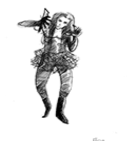
Intervention of Hugues BazinLaboratory of Research-Action LISRA Stakes of the recognition of a third space toward a Social Art We won't try now to give a definition to art or social terms, but to the space of experimentation that the relationship between both words produces. Let's not consider SOcial Art as an object with specific properties, but to understand it as a relationship between art and social.Actually, there is either art, or not. There isn't a Social art, or moreover every art is social in the way in which one work of art will meet a public and generates an aesthetic experience. The Social Art gives a description of what happens in a form of involvement of art in some "closed" situtations (social and educative centres, health centres, jail...) or "open" situations (street, neighbourhoods, public spaces...). The word "social" can be understood with a microsociological approach, as in collective human situations.Social Art gives precision to an intention or a process thant another position that could be "art for art". Both have their own coherence. But Social Art appears as less legitimate as an artistic approach than Art for Art, according to academies and institutions. This question of legitimacy, of knowledge and recognition is a tool of analysis of the stakes of a periode, an age. We can compare it with our approach of research-action in my laboratory (LISRA). The dash between research and action is interesting. We can not say that research action is a specific science, but the involvement in a specific approach in a situation of social and scientific coproduction, as Social-Art is a social and artistic coproduction. The problem is that institutions only recognize the positivist or academic science.An hybride spaceFurther than this speech about scientific or artistic criterias, we can find political stakes, problematics and issues to which we try to give visibility with this new term "third space" which can be adapted to each field of the human activity. Indeed, in that closed relationship of Art and social, we could give a definition of Social-Art as the posiblity to create an autonomous third space without which a political thought of culture couldn't exist. How can we explain then, that even if this wealth of knowledge isn't recognized?Actually, it is not proper to Social-Art but to all hybride form that are not a simple addition of two concepts, but the creation of a third one. We could make the same remark with the relationship between market economy and social economy, between the scientific research and the pragmatic action, between the territory and patrimonial culture and teh nomade culture... Actors who act in those "between both" zones play on an enlarged glossary of skillness that they can use in each situation. However those actors are not considered as experts. Finally, we get a feeling of waste because entire areas of human involvement are not recognized.Several questions come then : how to define this Third Space of the human experience? Why is it difficult to think about it, and how can we give it recognition and allow it to put out stakes?I will give several examples of experiences that my laboratory made. We can first give the example of artistic workshops that are given in popular areas, as a non academic meeting between a pupil, in a social context, in a topic, with teachers or praticians that give more importance to the process of transformation than to the result. This kind of action gives the possiblity to a participant to get the freedom to get a new social posture, to get a new point of view. The relationships that are created between each protagonist looks like an ecosystem with a strong creative potential, diversity of participants, a cooperation that pool various skillness, autonomy of management, and as every ecosystem, effects of boundaries of the zones of the situation (process of awareness, transmission, creation, brodcasting).We noticed the same thing in other intermediate spaces as an Echomuseum, in a popular French neighbourhood, la Goutte d'Or, in PAris. This association is an open space for social and artistic crossing, of meeting, exposition, workshops, resources centre, which isn't recognized, nor in its social impact, nor in its artistic one. This is an unlisted "somewhere", not an utopia because real, but with another relationship with reality, an "heterotopia" to remind the term of Michel Foucault1: Concrete spaces that host the imaginary of a fabric of make society otherwise. It could be the best way to define social-art, those temporary autonomous zones, already described in 1991 by Hakim Bey2.A political thought of cultureThen, are the third spaces we are talking about, condamned to stay in the unknown land, without any visibility? However those spaces reflect the vivacity of territories, of a part of the society from which they capt the movement, the eregy, the emanations, colours. UNESCO calls it "non material culture". We notice that the observatories only look at what they want to look. The studies study what we want to analyse. Otherwise, we are blocked between the paradigms of thought of the past, and need to understant now, the contemporanean movements.One demonstration is the sectorial division of the economical activity that prevent to develop an ecosystemic thought and gives the focus on a way to think the town that forgets living spaces which are a factor of transformation of urbanism3. We only consider it as places to full or empty, under a market and securitary ideology, as our president in France call "spaces to civilize" (which means to control).This is the whole dificulty that joins the concept of Social Art : to replace the human being in the centre, as a wealth producer, not to benefit (cognitive capitalism, bio power, performance), nor as a problem to solve in the institutional field (youth inclusion, immigration, suburbs...).Other example, the absence of a political thought of culture that traditionnally opose a legitimate, official, patrimonial or institutional culture guaranteed by the State, And a popular consumption, globalized culture submissive to the market laws (cultural industry, mainstream culture).As if between this vertical and horizontal conception of the culture, didn't exist a slanting vision of a third space in which the culture could play her fundamental role of reflection on the society. In other words, a political thought of the culture could only be posible if we go out from a binary oposition (that drive the society to become an object with cultural fixed twists and turns4) to access to a complexity and facilitate the construction of a third speech in the public space, as an introduction to the other (the stranger), and a posible mediation (to meet each other).Social Art is a way to produce this third space, and underlines the political inability to think about it. A graf artist will notice that his work in a galery is appreciated, as it could be denied in despised in the public space, even if the stake is to reintroduce the aesthetic experience in a non market space. ON the same style, a hip hop dancer will be recognized if he dances on a theatre stage and denied in the street, even if he tried to reintroduce the body in the society, as an expression of movement.Briefly, an ars is accepted and acceptable if it is not an art for struggling. As the actors of a third space are accepted and acceptable if they don't participate to a transformation of the society.Creation of poles of knowledgeIn every case, the forms of involvement are disrupted5 while we come from the trade unions struggles and directly go to the human personality exploitation as a primary material (creativity, emotion, knowledge, skillness..). ON this area of the economy of knowledge we find the stakes of power and new forms of struggle. Social art as other interventions of the third space could be a lever to a training-action because it opens a new possibility field and new ways of a collective awareness. We try with LISRA at a regional level to support those spaces who don't get any visibility, toward institutions. The main actors of the debate, those who really acture d’un « champ du possible » en indiquant d’autres voies pour une intelligence collective. in the field of culture and Popular Education are absent from the political stage. Our work is not only to allow some professionals to defend their statute, but to include all the social and cultural workers if we agree with the facts that those stakes really get a political dimension when they don't belong only to professionals of a category of self-proclaimed experts.This needs a re-orientation of the institutions grants and supports to cultural projects. Cooperative actions of poles of production of knowledge must be supported, as networks melting sciences, arts, culture, participation, citizenchip, with assessment tools6 that could give confirmation of the relevance of this orientation.One of the goals of those system is to allow the recognition og the third spaces as spaces of coherent experimentations which can create an apropriable inovation, as a social laboratory. Actually an experimentation only touches a small number of people. Without a recognition as a social laboratory, it can't enlarge and be developped. The idea is to use the new knowledge for an effective transformation with assessing references and broadcasting the results.Hugues Bazin – 2011 June, published in http://blog.recherche-action.fr/tiers-espace/Michel Foucault, Dits et écrits 1984 , Des espaces autres (conférence au Cercle d'études architecturales, 14 mars 1967), in Architecture, Mouvement, Continuité, n°5, octobre 1984, pp. 46-49. (http://foucault.info/documents/heteroTopia/foucault.heteroTopia.fr.html) 2 BEY H, TAZ : The Temporary Autonomous Zone, 1991, Ed. Autonomedia USA, Paris : L`éclat, 1997, 35p. 3 Movement art adepts (or « parkour ») and other urban explorers can testify of it. See the critics of culturalist thesis that give legitimacy to exclusion and discrimination politics : from the « deny of cultures » to the misunderstanding of african migration (http://www.laurent-mucchielli.org/index.php?post%2F2011%2F05%2F27%2Fdu-deni-des-cultures-a-la-meconnaissance-de-l-immigration-africaine) 5 There is a resistence from the highet political and economical institutions who don't accept any form of change that could come from the basis, with organisation modes as a citizen counter power. If we can easily analyse it, the strategies to fight it are dificult to conceive What happens today on the other side of the mediteranea, and which is arriving in Europe, passing by Gibraltar, is an indicator of a melting between a free culture (coming from the computering) and alternative ways of organisation. 6 Literally, give a value. What is assessed? How? why? by whom? the interest of evaluation directly depends on the interest in the assessed object. Get efficient tools doesn't mean nothing if we don't know what to analyse and why.
Intervention of Perrine Alranque,
Federation of street performing arts :
street performing Art and social art
To be the spokespersonn of the federation of street Performing Arts Languedoc Roussillon, won't be easy. I will try to put out the stakes and issues and to remind first what is this federation of street performing Arts of Languedoc Roussillon.
The federation of Street Performing Arts Languedoc Roussillon is a network of individuals and organisations that want to compose the environment of street performing arts. The federation gathers professionals in their diversity and makes a collective of active and various skills. This is a space of ideas, information, exchanges, debates, but also a group of lobbying. the federation defends common ethic and interests, linked to the specificity of the creation in the public space. the federation works in three axes :
The artistic and professional recognition
The development of grants
The dialogue with all the cultural and artistic actors
The federation of street arts Languedoc Roussillon, in this stake of development of Street performing arts is based on the principle that street performing arts, art in the public space, propose an alternative to the market culture and to uniformisation.
Nowadays, those who don't consume, are excluded from this culture. Those ones don't enter in the recognized area nor in the collective conventions. But artists, those who perpetuate a social culture, those who know that culture and life, life, and culture are overlapped. The pure creativity isn't the cure-all of the artist, would he work in the street or elsewhere. The pure creativity belongs to those who take it, to individuals that feel it as a mean of expression, open to the creation of another world. Making Social Art is simply believe in the existence, believe that there are no cultural superiority, believe that the genius or the artist is only the reflection of the genius of a culture, of cultures. Where there is life, there is culture, because life gives to the creator, she doesn't exclude. The struggle to live and love, this is life. She makes the culture evolve.
How did I reach here? How did I join this federation? Because a few years ago, with some friends, we created a company of Street Performing Arts. We called it like this, because we couldn't use any other work. We told ourselves that we weren't artists, we didn't get the genius and that we were interested, in the people genius. Toward this genius of people, rituals, traditions, and since the dawn of time, people have been creating. We work on a workfield of experimentation, we search, we make anthropology, we try to know why from the beginning of the world, people have needed to celebrate death.
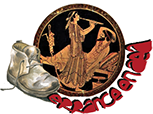
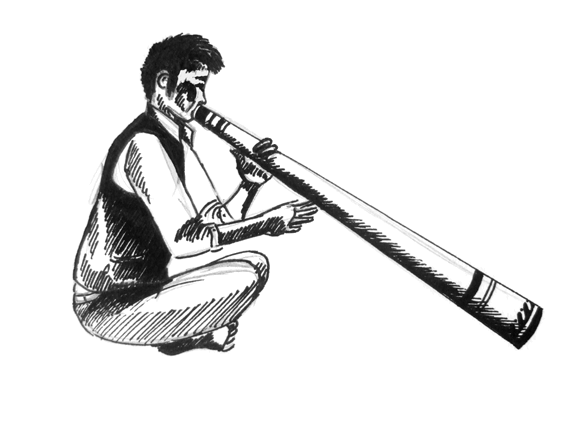
Intervention de Perrine Alranque,
Fédération des art de la rue :
Art de rue et art social
Etre porte parole de la Fédération des art de la rue Languedoc Roussillon, ça va pas être simple. Je vais essayer de poser un peu les problématiques et d'abord rappeller un peu ce que c'est cette Fédération des art de la rue Languedoc Roussillon.
La Fédération des art de la rue Languedoc Roussillon c'est un réseau d'individus comme de structures qui se veulent composer le paysage des arts de la rue. La fédération rassemble des professionnels dans leur diversité et forme un collectif de compétences actives et plurielles. C'est un espace d'idées, d'informations, d'échanges, de débats, mais aussi un groupe de pression. La fédération défend une éthique, des intérêts communs, liés à la spécificité de la création dans l'espace public. La fédération oeuvre sur trois axes :
La reconnaissance professionnelle et artistique.
Le développement des financements.
Le dialogue avec l'ensemble des acteurs artistiques et culturels.
La Fédération des art de la rue Languedoc Roussillon, dans cet enjeux de développement des arts de la rue se base sur le principe que l'art de la rue, l'art dans l'espace public, vient proposer une alternative à la culture commerciale, et à ceux qui en appellent à l'uniformisation
Aujourd'hui, ceux qui ne sont pas consommateurs sont exclus de cette culture. Ceux-là ne rentrent pas dans le périmètre reconnu ni dans les conventions collectives. Mais les artistes dans tout ça, ceux qui sont continuateurs d'une culture sociale, c'est ceux qui savent que cullture et vie, vie et culture, sont imbriquées. La créativité pure n'est pas la panacée de l'artiste, qu'il soit de rue ou d'ailleurs. La créativité pure appartient à ceux qui s'en saisissent, aux individus qui la sentent comme un moyen d'expression ouvert sur la création d'un autre monde. Faire de l'art social c'est tout simplement croire en la vie, croire qu'il n'y a pas de superiorité culturelle, croire que le génie de l'artiste n'est que le reflet du génie d'une culture, des cultures. Là où il y a de la vie, il y a de la culture, car la vie elle donne au créateur, elle ne fait pas d'exclusion la vie. La lutte pour vivre et pour aimer, c'est la vie. C'est elle qui fait évoluer la culture.
Comment j'y suis venue, à, ça, comment je m'y suis retrouvé dans cette fédération, c'est parce qu'il y a quelques années, avec des copains, on a créé une compagnie de théâtre de rue. On l'a appelé comme ça, parce qu'Il n'y avait pas d'autres mots que l'on pouvait utiliser. On s'est dit que justement, on n'était pas des artistes, on n'avait pas le génie et que nous ce qui nous interessait, c'était le génie des peuples et à travers ce génie des peuples, les rituels, les traditions, que depuis la nuit des temps les peuples ont créé. On travaille sur un terrain d'expérimentation, on cherche, on fait un peu d'ethnologie, on essaye de savoir pourquoi depuis la nuit des temps les hommes ont eu besoin de fêter les morts.
social ARTISTRY NETWORK
SOCIAL ArtISTRY NETWORK
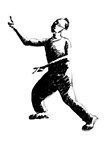
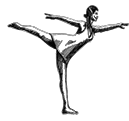
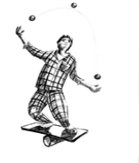
ART SOCIAL - stakes and issues
1- Hugues Bazin : stakes of the recognition of a third space toward a social art
2- Alain Manac : the cultural policies and the amateur practice
3- Bahija Kibbou : Art Factories
4- Cie Sin
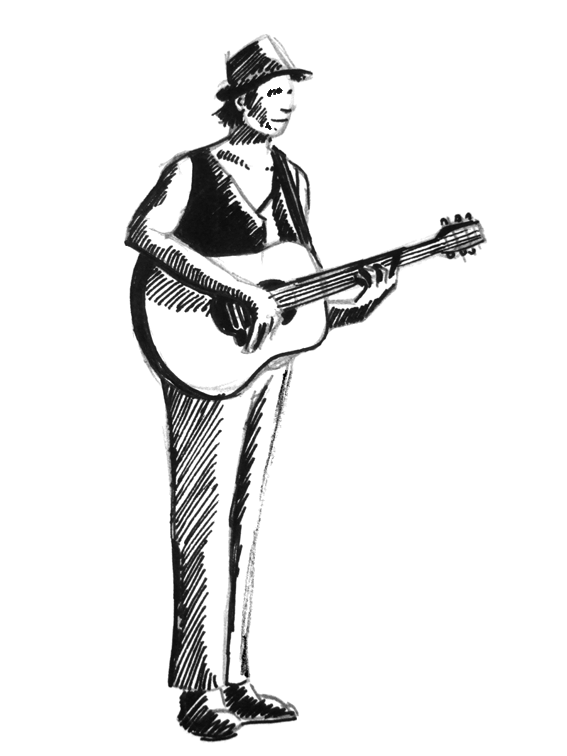
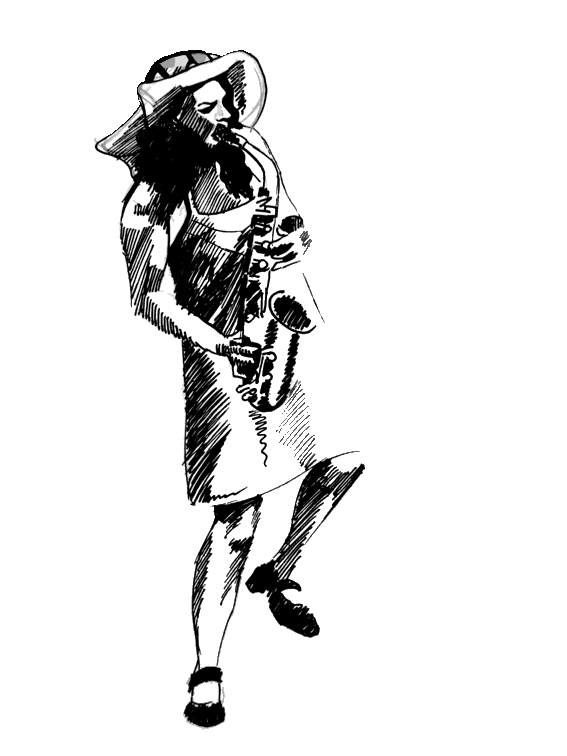
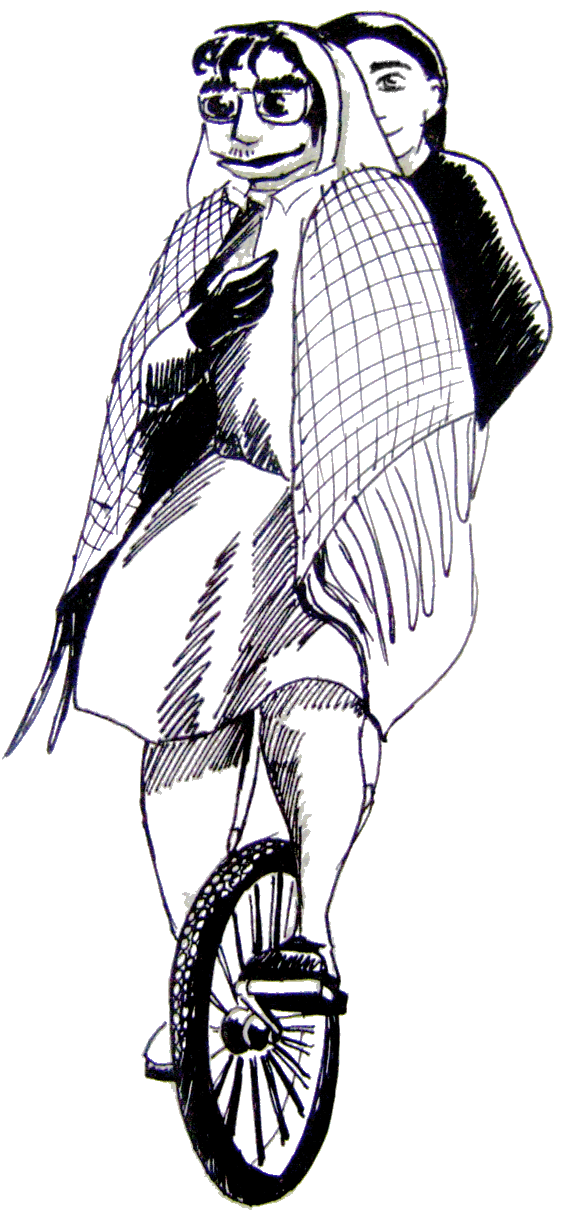
Intervention OF Alain Manac
FOYERS RURAUX
The cultural policies and the amateur practice
I come and testify of several experiences linked with the theme of your seminar. First, an organisation whith which I spent time, called "Outdoor Theater", a cycle of theatre and of humanity, whose project was to introduce art in suburbs. I lived this adventure as a young actor and trainer , but I became aware that in the theatre of Sartrouville, only people from the "Quartier Latin" came and see the shows of Chéreau, which means the parisian inteligentsia, and maybe some people from works councils of local companies.
After 3 years of this, I thought that it wasn't the theatre I wanted to make. I came from the amateur theatre, I even had repeated classes because of my passion and I found back my previous friends from the amateur theatre and I initiated a project of interventionist in which I put some rules :
1, we don't play stock plays,
2, we don't play in theatres, which means, in the street, in companies lunchrooms, in flats, asociations, places where people are living and don't go to see shows.
So we started with this company during more than 10 years. We made around 250 or 300 interventions a year, with this huge identity which was the one of trade unions action. When we worked in a firm, we were in touch with its trade union who told us : "if you could come and play your clown show in the lunchroom, we give you some elements...". We arrived there, we worked with the the union officers to understand the problems they wanted to deal with and we intergrated it in our frame of show. Then we played it in the firm's cafeteria. They were shows, in a worse way, of the kind of Dario Fo's shows, based on laugh and humor. This work that I lived in an intensive way, was a third convention very important for me, dedicated to people who wanted to use theatre as a tool to express or help others to express themselves, or express in another way as in a tract, what they were living, what they felt, what they were fighting for and what they were living for. We worked with the struggling enterprises which were exhausted and who asked us to come and create a show. Our approach evolved. We refused to play and asked to the employees to play their proper role.
I don't know if I am going now to talk about art, I don't want to talk about it. For me, it is not art, but a work on people's expression, on the respect of each one's intimacy and individual approach of creation.
During this period, I met "the Popular Education". In France, Popular education was something phenomenal and exptremely efficient. It was born from a speech by Condorcet in 1792 I think, who said that people must be educated to be citizens. This way of thinking about permanent education, which means the right for everybody to get access to training, all life long was forgotten. We recover those ideas in the second half of the 19th century, with the revolution of 1848, because, at this moment, France adopted the universal suffrage and the question of the formation is asked. The question of education is the same question of democracy, and of culture. I mean we need knowledge to vote, not only to do it because one party told us to do it. And all the work of the Popular Education was linked to this idea, which means "I act because I know, and I take a stand and a precised politic position".
So, why we should create a link between the work I talked about before, of Actor (and not artist), of performing actor, of firms and intervention actor, of neighbourhoods actor, of fairs actor? because I believe that at a moment or another, triggers happen with laughin or scorn, and above all with practice. We often forget that 24% of the French population has an amateur artistic practice. However the cultural politics are based on the access to culture, which means above all access to arts. And this is the main error, according to me, of the French politics that since 1960 and Malraux's thoughts has been saying "Culture exists when there is a meeting between people and a work of art". I believe that the 60 years of existence of the cutlural ministry show us that it is completely wrong and culture dosen't exist necessarily when people meet a work of art. This can be an artistic consumption act, what happens nowadays : 16% of the French population benefit from all the cultural politics to consume culture and art in houses or places reserved for them and the rest doesn't exist.
I admint that I caricature a little bit, it is voluntarily. This cultural politics in France, based on the access to culture, I don't know if you realise how it is despising to say to the French people : "You don't have any access to culture and we are going to do everything to provide you this access. Me, I get some and this culture stays in museums, houses of culture, national centers.... So come and see my culture and you will see how everything is going to change in your lives".
I live in a popular neighbourhood in Grenoble, called "La Villeneuve". Around 70% of the accomodations are social appartments (with grants from the state) and nowadays, who live in social flats? These are people who haven't worked for 1 or 2 generations, without incomes, who live in a total misery, excluded from school, from public services, from work. In a neighbourhood of 12000 inhabitants, 70% of social appartments, do you see how many people it represents? We live next to the house of culture, and I saw something very estounding on the other day. 2 years before a choregraphic artist called me, very sympathically, and told me "I want to make a dance work in this neighbourhood that I really like, which is very beautiful".
It is true that it is very beautiful, very contemporanean, Corbusier, a wonderful park...
"and I would like to associate the inhabitants". As a president of a neighbourhood association, I answer her : "come, work, and that's all." Then occured the period of riots, that you might hear about, so she didn't make the show because she was afraid. So she made a movie. She mobilized 90 actors, 90 inhabitants from the neighbourhood, which is huge, the choir of the high school, of the secondary school, adults who never had danced and who were successful in dancing. And this movie was presented in... Where? in the house of culture, and it won't be presented in the neighbourhood. 90 personns of the neighbourhood who participated to this work of art (as she calls it), won't see the restitution of their work. She explains it saying :"Me, I created a work of art". Well, it is a very little bit embarrassing.
Other example, in the neighbourhood, we get a stage, which is a regional stage, dedicated to shows for children and youngsters, which means children from schools. IN the neighbourhood, we have 7 schools and we show them "good quality" shows, label given by the DRAC (regional direction of cultural issues). The labels are given by people who have legitimacy to say what is artistic or not. The shows are played, they are successful (for sure, we take children from school and put them in front of it) and we call it "the school of the audience". It means more or less that our conception of culture is to say : "you aren't good, guys! We are going to teach you how to appreciate a work of art which is prepared in a national theatre, granted by public money, because, honestly, you're not good". This school of the audience has been existing for 15 years in the neighbourhood, and none of those children became an adult who consumes shows, because they don't talk of their culture. I arrive to the definition given by UNESCO to the word Culture : The word culture covers the values, beliefs, convictions, languages, arts, traditions, institutions, ways of life with which a personn express her humanity". You see that here, arts take their place as industry, economics, business, ecology, as the rest. This means that pretending that the nowadays politics, as they are made give a definition to culture as accessibility to art, is a hoax.
I used to be an artist, when I was an actor, I created shows, useful shows, that served... I need as a personn to keep on going on stage, so I did it as an amateur. I made contemporanean dance as an amateur and I believe, that I had exactly the same pleasure as when I was professional, whch means a work I do as a human being, citizen, without looking for money, who shows his work to other people. Being a contemporanean dancer as an amateur meant for example 5 days of show with 500 personns in the room. A specific public, a specific production, with people who never go to see other shows because they are parents of the dancers, or friends, or parents of friends... An amateur artistic practice allows to federate people around a work made by people for other people. The social artist is a concept which deeply bores me. I think we should work on the analysis of the aesthetical practices of each one of us and give the possibility to everyone to get access to those things, with amateur practice, by supporting and not disparaging it.
I conclude, I didn't tell all my life. After this, I became a delegate for an organisation called : "Culture and freedom", who worked on culture in firms in which we tried to give value to the work as a cultural fact. Those practices were forgotten in the 80s when the trade unions were no more interested in this topic, because of the employment crisis. They concentrated their efforts on saving employment and not on the symbolical value of work and its place in society. Then I was a delegate for the organisation "Foyer Rural", in charge of the culture, and I learned many things of the amateur practice. I went to villages fairs, food fairs, camembert fair, ... in neighbourhoods in which those kind of popular faires were forgotten, and with people who created one show a year. Those people gather every wednesday evening during one year, to give a show for all the village who eat together after. Isn't it more cultural than "the new territories of art" that the ministry talks about now, or than the industrial wasteland, who become exhausted after 10 years, than the national theatres that based on the same privileges than this idea of works of art.
I don't want that art be a lesson to the people. I want that people make art.
Intervention of Bahija Kibou
Art Factories Network (Art, population and territories)
Art factories is an international network created to think together about links, relationship that could exist between art, population and territories. It is open, so we gather artists, projects holders, directors of organisations, places (cultural wastelands), actors from the "new territories of art". All are gathered to try to produce knowledge and create a space of reflection about the matter from which we could create a cultural policy integrating populations in their territories.
Concretely, we act toward 3 axes :
One pole of production of resources with workshops of internal reflection, conferences, publications, projects of international cooperation.
A platform of web resources which gathers some information that I will talk about later.
A pole of caring and advices, thanks to our members' knowledge, of the projects holders.
We organise 4 times a year internal workshops for our members. There, we think about topics of actuality of the cultural life and we question our members. Each one will host in a moment or another the reflection workshop, and will think about a theme with us. Those workshops are synthesized, transcribed and published later.
We organise conferences, or co-organise them, with people who want to have a reflection on a specific topic. For example we organised last september a conference with the Fabric of Geneva, on the topic of Culture, Urbanism and gentrification. This was linked to local urban phenomenons.
We participate to studies of reflection, we lead a Study-action, with searchers, experts, or resource-people, on the European Capital city of Culture.
We also have been working for one year on a project of culture and politics in town. We try there to make a portrait of the culture in a town, to give it more visibility.
The last project of publication is not yet definitive, about in live shows in the "new territories of art". Even if we try to separate theatre and new territories of art, we think about in live shows in spaces of experimentation.
Presentation of movies of experiences. (www.artfactories.fr)
Intervention OF THE SIN COMPANY :
Intervention of the Company Sin :
We are here to talk to you of a project we have been managing on the neighbourhood of Petit Bard, in Montpellier for 2 years. But first, I am going to introduce you to the company. We have been existing for around 15 years. It was created in the coastal Alps, in Nice exactly, gathering students in arts and young workers. We worked in the Cultural Center of Grasse and the university of Nice. The cultural center was one of those places in which the "Popular Education", working with the local population, the participation of citizens was a reality. It was a long course political fight. In the university, with this company, we were young, asking ourselves many questions (even more than today), asking ourselves how we could act in art, not clearly social art, but how we could keep on acting in politics with art, gathering people... We created plays of Brecht, Camus, theatre of intervention as soon as political news made us react. And in this region, it wasn't missing. And it is still not missing. We grew up like this, until we squatted with other artists former military barracks. It was called "La Brèche / Les Diables Bleus", in Nice. It was a very particular experience because this kind of gathering and acting together was rare in this region. It was an hybrid place, with two buildings, one for population, with association acting for citizenship, and one dedicated to arts, theatre creation, photography... We tried during 5 years to manage this mix of citizenship and art, until the municipality of Nice evict us.
Our position of No institution, of No social worker, even if the institutions made all that they could to put us in a frame (telling us :"it won't work if you do like this, you won't work with women if you don't pass by literacy associations, you won't work with youth if you don't pass by educators..."). We told ourselves that we had to go and meet those people directly. And this position of artist (to give a name to that), but our position ourselves, of human beings, that went to meet others, could have been the position of an ethnologist. We went and talked with policemen, drug dealers, old muslims, youngsters who don't wand to hold the headscarf, without pretending we crossed barriers, we could meet very different people. We didn't accept the limits that other wanted to give us, but following our wills, our ideas, our approaches to meet people, to say what we wanted to do, and without paying attention to people who told us to that we were annoying, that we would get problems. We were making movies in neighbourhoods and people told us sometimes when we met them : "don't film! but you can talk with me." And quickly we could film because people felt we were not a danger for them and we wouldn't put the movies online or on the TV.
We really enjoy raw testimonies, because it is given, then we get texts that we write from people we met, and intimate or poetic texts, in which we question the meetings we do, and how we feel with it. GO and meet people's intimacy is also show our own one, our own relationship to others. One tells us : "before I didn't wear a headscarf, and people looked at me strangely because I was wearing like this. Little by little I came into a spiritual search and I started praying, for me...."
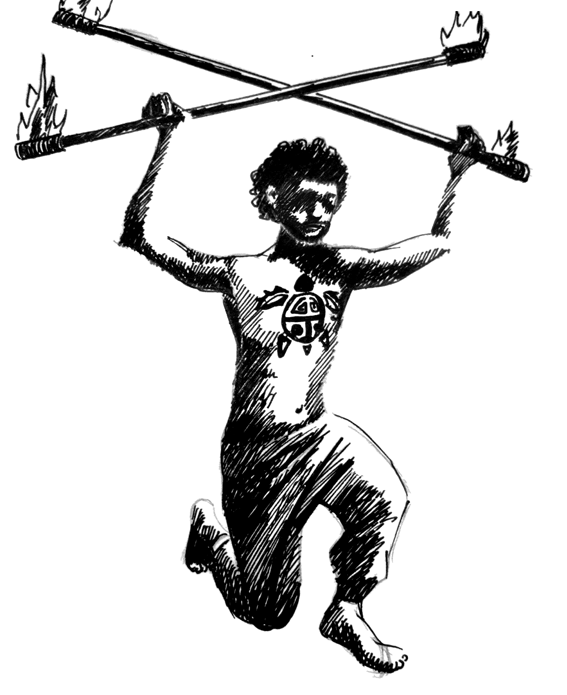
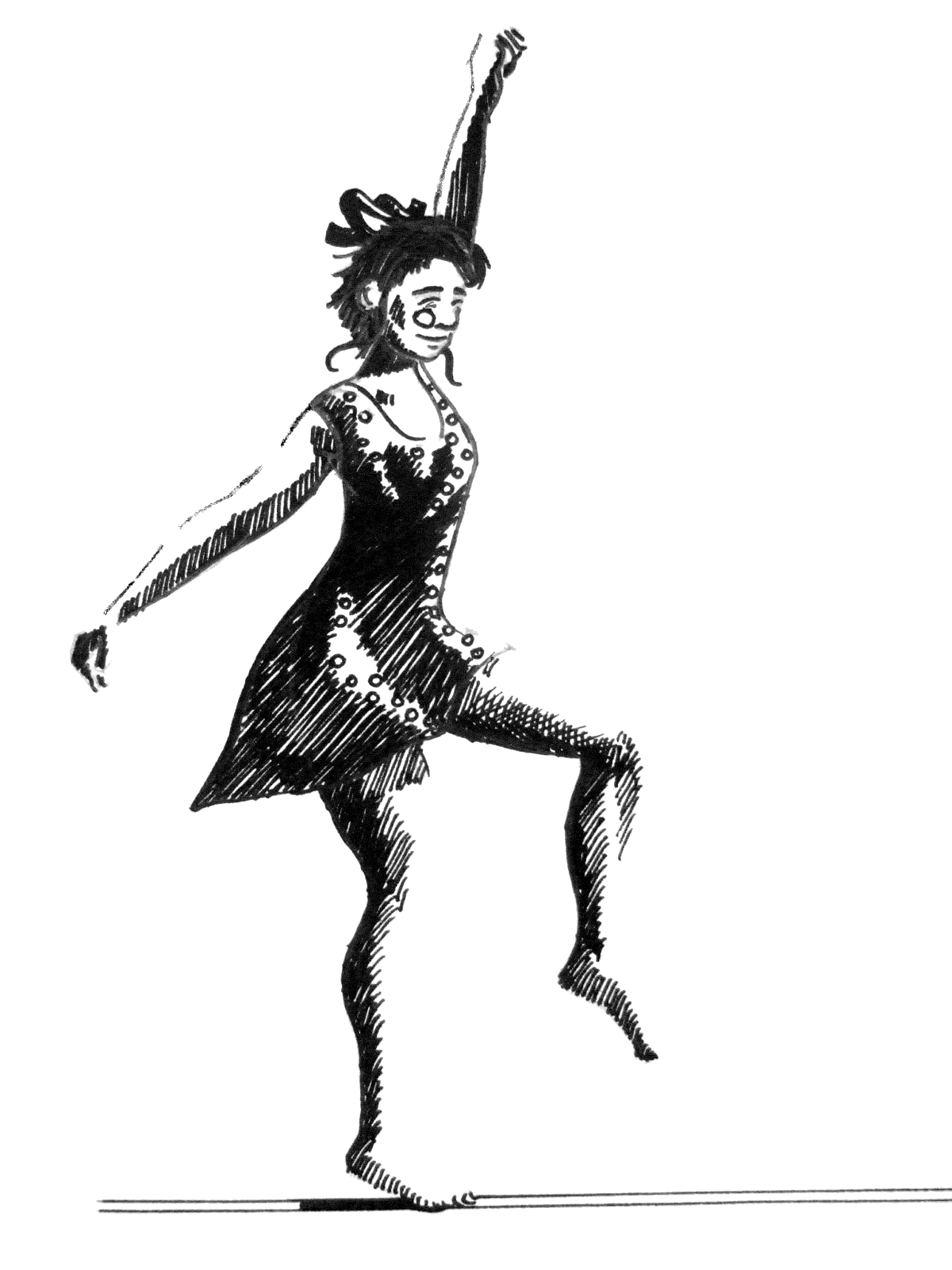

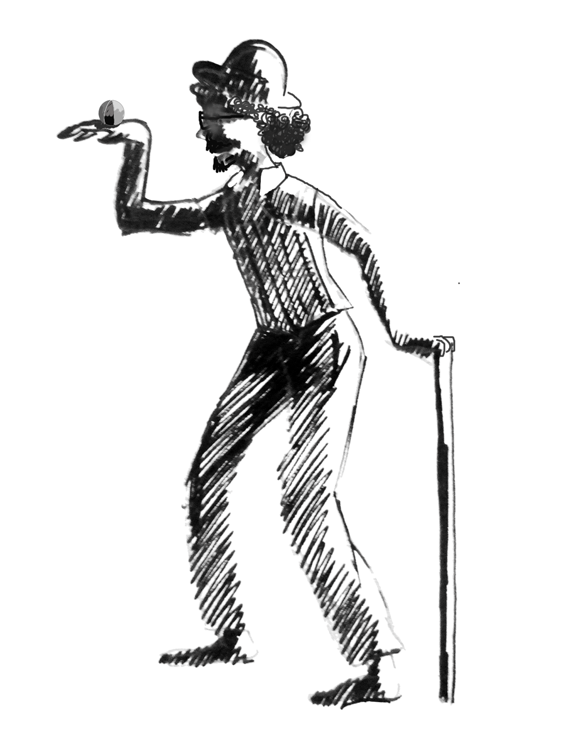
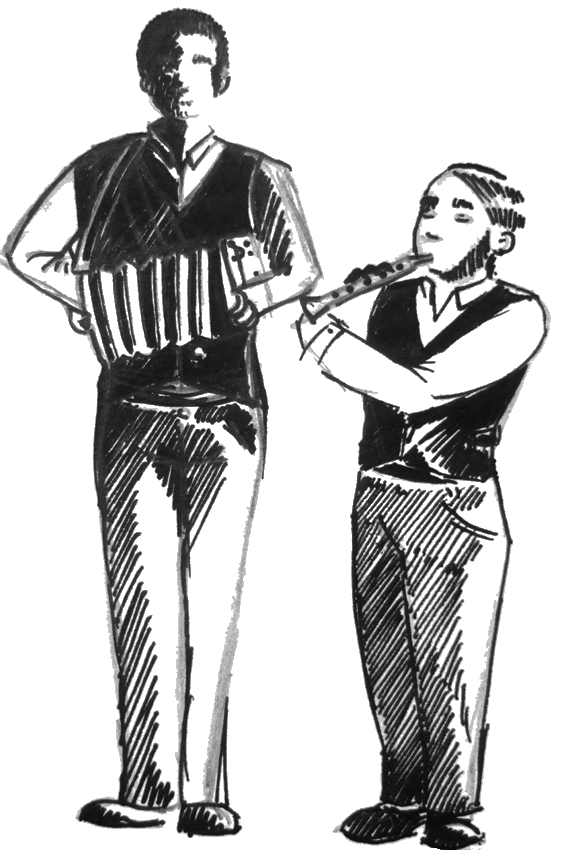
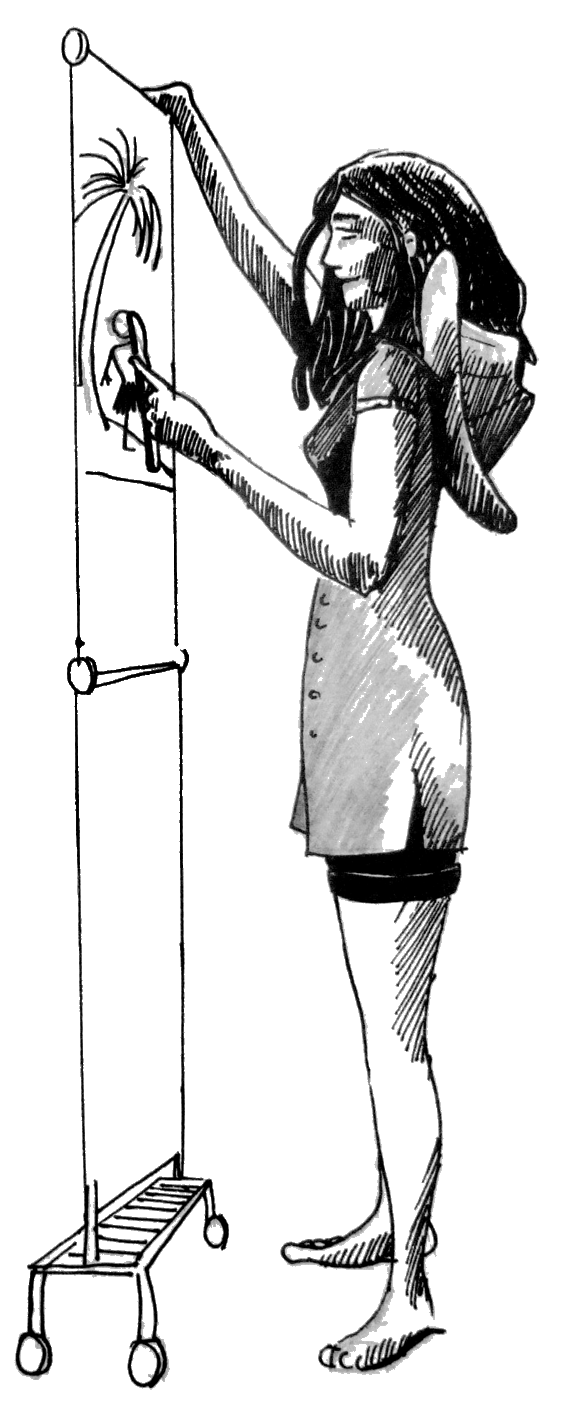
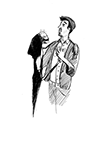
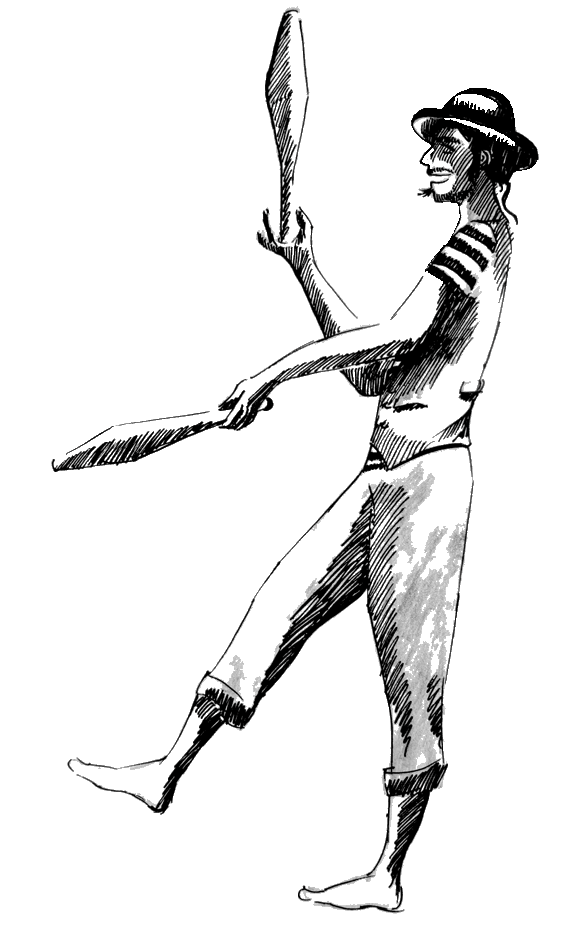
ERRANCE EN AÉA